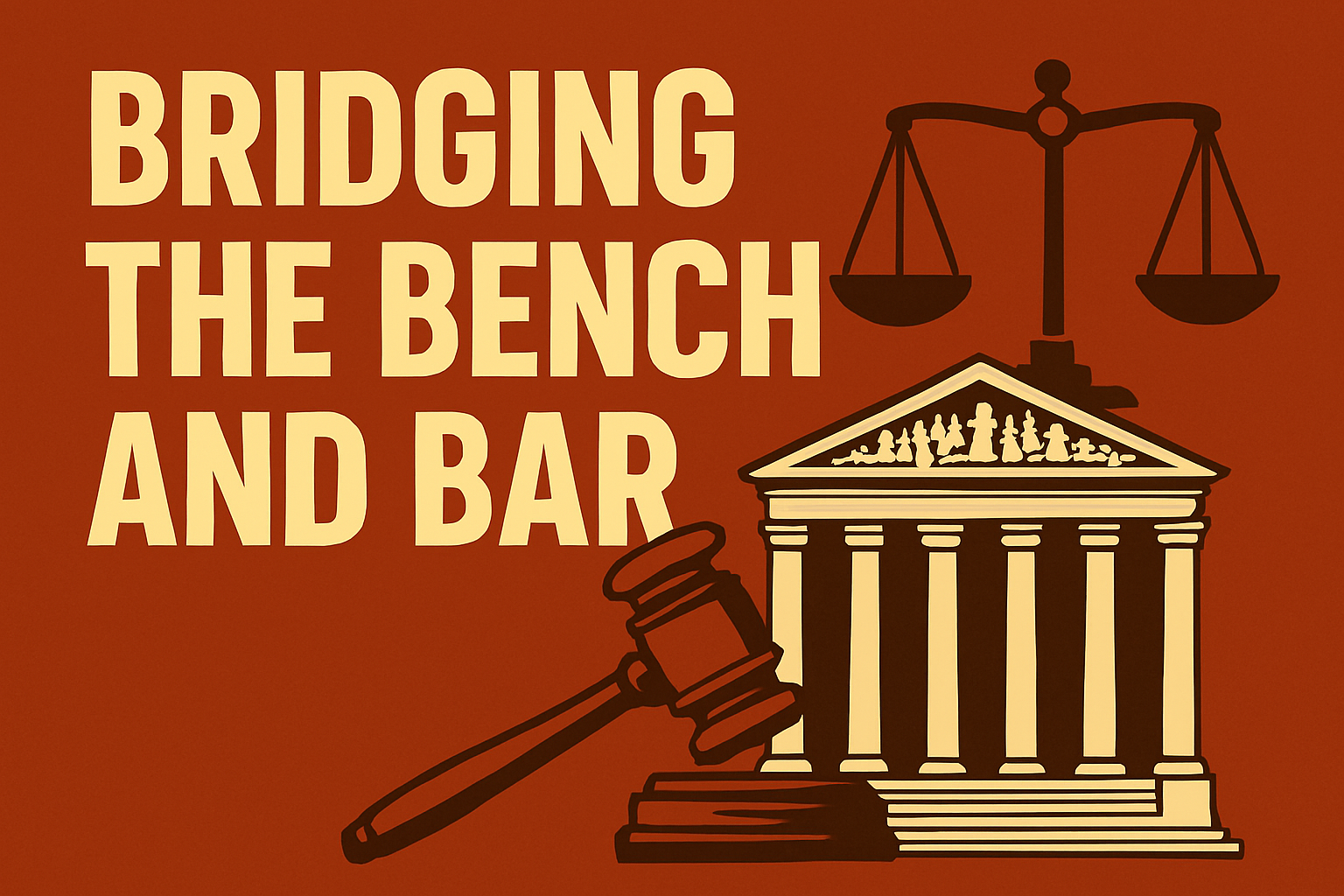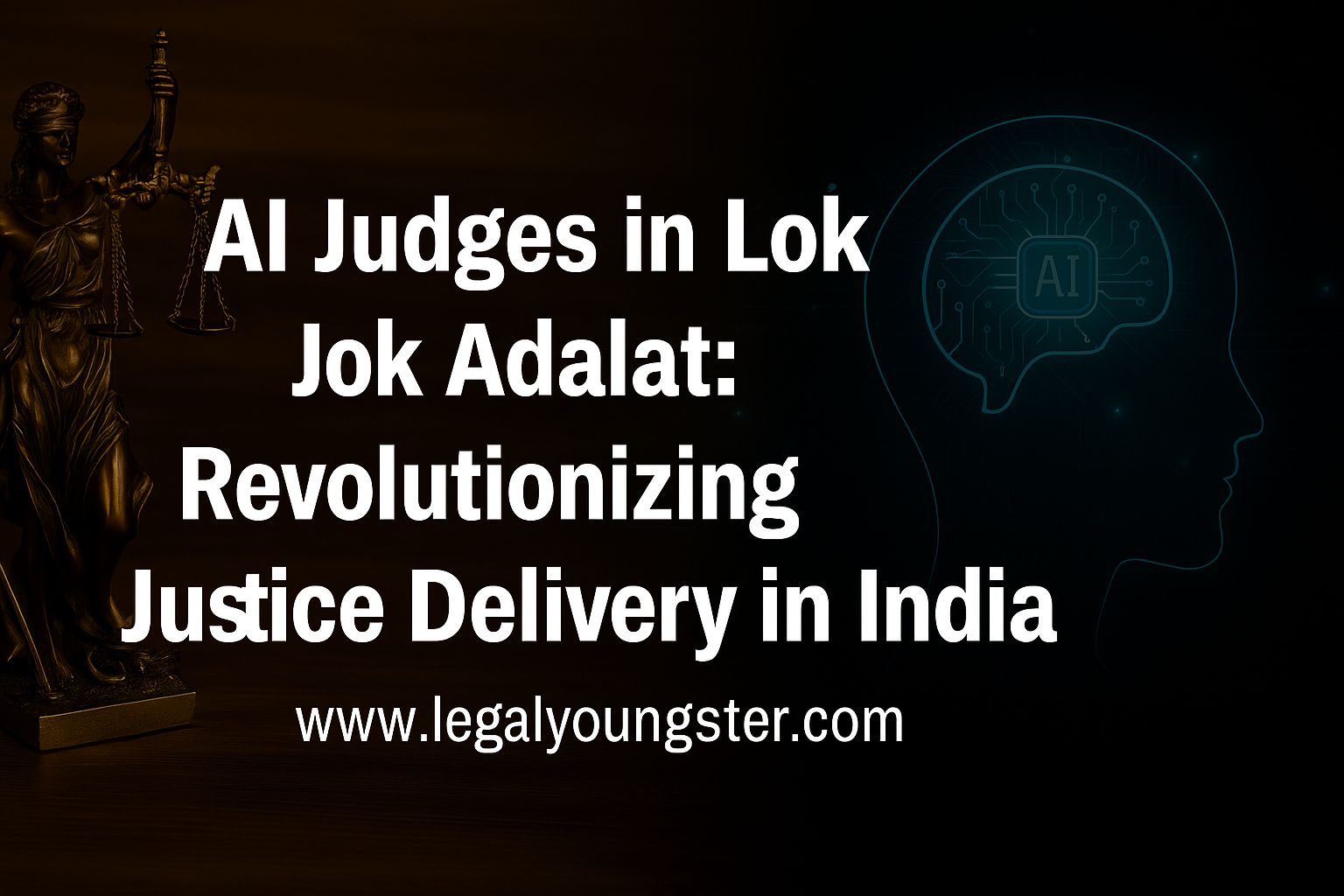



Author-Kanishka Sejwal & Amay Yadav
K.R. Mangalam University
“When algorithms join hands with justice, can they truly deliver fairness at the speed of light?”
The Indian judicial system, burdened by over 40 million pending cases, has long sought innovative solutions to deliver timely justice (NCRB, 2024). Lok Adalats, or “People’s Courts,” have been a cornerstone of alternative dispute resolution (ADR) in India since 1982, resolving disputes through amicable settlements under the Legal Services Authorities Act, 1987 (NALSA, 2025). The introduction of Artificial Intelligence (AI) into Lok Adalats, notably with India’s first AI-powered Digital Lok Adalat launched in Rajasthan in 2022, marks a transformative step toward modernizing justice delivery (GKToday, 2022). But can AI “judges”—or AI-driven tools—uphold the principles of fairness, accessibility, and efficiency in a system rooted in human mediation? This article explores the emergence, implications, and challenges of AI in Lok Adalats, with a focus on India’s evolving legal landscape.
I. What Are AI Judges in Lok Adalat?
AI judges in Lok Adalats are not autonomous robots replacing human conciliators but advanced AI tools designed to assist in dispute resolution. These tools, developed by platforms like Jupitice Justice Technologies, streamline processes such as case management, document drafting, and settlement facilitation (GKToday, 2022). In Rajasthan’s Digital Lok Adalat, launched on July 17, 2022, AI-powered features include real-time transcription, e-notice generation, smart templates for settlement agreements, and interactive chatbots for litigant support (The Print, 2022). These systems aim to enhance the efficiency of Lok Adalat benches, which traditionally comprise a judicial officer, a lawyer, and a social worker, as per the Legal Services Authorities Act, 1987 (NALSA, 2025).
Unlike human judges, AI tools do not make binding decisions in Lok Adalats, as the system relies on consensual settlements. Instead, they automate administrative tasks, provide data-driven insights, and facilitate communication, enabling faster resolutions. For instance, AI can analyze case details to suggest settlement options based on historical data, though the final agreement remains a human decision (IndiaAI, 2025).
Infographic on AI Tools in Lok Adalat: “How AI Enhances Lok Adalat: This infographic outlines the integration of AI tools across key stages of Lok Adalat proceedings — from e-filing applications and real-time speech transcription to generating settlement templates and providing chatbot-based legal assistance — streamlining justice delivery and improving accessibility.
Source: Author’s Contribution
II. Why AI in Lok Adalats?
The integration of AI into Lok Adalats addresses India’s judicial backlog, with a NITI Aayog report estimating it would take 324 years to clear pending cases at the current pace (GKToday, 2022). The COVID-19 pandemic exacerbated this, halting court proceedings and adding to delays, as seen in a Bihar land dispute resolved after 108 years (The Print, 2022). AI-powered Lok Adalats aim to bridge the justice gap, especially for marginalized communities, by making dispute resolution faster, cheaper, and more accessible.
AI tools enhance efficiency in several ways:
Real-Time Transcription: AI transcribes hearings, allowing judges to handle more cases daily (Adalat AI, n.d.).
Case Flow Management: AI pulls case details instantly, reducing manual administrative burdens (IndiaAI, 2025).
Accessibility: AI chatbots provide case updates in regional languages, aiding litigants in remote areas (The Print, 2022).
These advancements align with Lok Adalat’s mission of delivering informal, cost-free justice, as no court fees are charged, and settled cases refund prior fees (NALSA, 2025).
Bar Chart on Case Backlog Reduction: “AI boosts Lok Adalat efficiency — Digital platforms settled significantly more cases than traditional methods from 2022 to 2024.”
Source: Author’s Contribution
III. Global Context of AI in Dispute Resolution
Globally, AI is reshaping judicial processes, offering parallels to India’s experiment:
Singapore’s Smart Courts: AI tools like automated case management systems streamline small claims tribunals, similar to Lok Adalats (Susskind, 2020).
China’s AI Judges: In 2019, China introduced AI-assisted judges for online dispute resolution, handling millions of cases annually (Kshetri, 2021).
Estonia’s AI Dispute Resolution: Estonia’s e-Justice system uses AI to resolve disputes under €7,000, focusing on efficiency (European Commission, 2023).
These systems highlight AI’s potential to enhance access to justice but also raise concerns about transparency and bias, which India must address in its Lok Adalat framework.
IV. Legal and Ethical Implications
The Legal Services Authorities Act, 1987, mandates that Lok Adalat awards are binding and non-appealable, emphasizing consensual settlements (NALSA, 2025). AI tools, while not decision-makers, influence the process by suggesting outcomes or prioritizing cases, raising ethical questions:
Bias in Algorithms: AI trained on biased data could disadvantage marginalized groups, undermining Article 39A’s goal of equal justice (Supreme Court of India, 2017).
Transparency: Litigants may not understand AI-driven suggestions, violating the principle of informed consent (Zuboff, 2022).
Data Privacy: AI systems handling sensitive case data must comply with the Digital Personal Data Protection Act, 2023 (Ministry of Electronics and Information Technology, 2023).
The Supreme Court’s recognition of privacy as a fundamental right under Article 21 (Supreme Court of India, 2017) underscores the need for robust data security in AI-driven Lok Adalats, as highlighted by a High Court subcommittee on secure connectivity (IndiaAI, 2025).
“AI in Lok Adalat: Benefits vs. Risks — While AI enhances speed, accessibility, and accuracy in legal proceedings (IndiaAI, 2025), it also introduces concerns around bias, privacy, and accountability (Zuboff, 2022), underscoring the need for balanced, ethical oversight.”
Source: Author’s Contribution
V. India’s AI Lok Adalat Framework
India’s first AI-powered Lok Adalat, launched by Rajasthan State Legal Services Authority (RSLSA) with Jupitice, targets pending and pre-litigation disputes (GKToday, 2022). Maharashtra has also adopted this model, leveraging AI to handle cases like matrimonial disputes, bank recoveries, and public utility issues (Testbook, 2025). The platform’s features include:
E-Notices: AI generates and delivers notices instantly.
Data Analytics: BI dashboards provide insights for better case prioritization (The Print, 2022).
Mobile Accessibility: The platform reaches remote villages via mobile apps and Common Service Centres (CSCs) (GKToday, 2022).
However, the Legal Services Authorities Act, 1987, does not explicitly address AI’s role, creating a regulatory gap. The absence of guidelines on AI transparency or accountability could undermine trust in Lok Adalat awards, especially in Permanent Lok Adalats, which can decide cases up to ₹1 crore if parties fail to settle (NALSA, 2025).
VI. Arguments For & Against AI in Lok Adalats
Arguments For
Speed and Scale: AI reduces case pendency by automating tasks, with Rajasthan’s Digital Lok Adalat resolving thousands of cases since 2022 (The Print, 2022).
Inclusivity: AI chatbots in regional languages make justice accessible to rural litigants (IndiaAI, 2025).
Cost-Effective: No court fees and faster resolutions save litigants money (NALSA, 2025).
Arguments Against
Risk of Bias: AI could perpetuate existing inequalities if trained on flawed datasets (Zuboff, 2022).
Limited Human Oversight: Over-reliance on AI may reduce the human touch critical to Lok Adalat’s conciliatory nature (Chander & Kamra, 2023).
Digital Divide: Rural areas with poor internet access may struggle to use AI platforms, excluding the very communities Lok Adalats aim to serve (GKToday, 2022).
Reforms in Criminal Justice System and Prison Conditions: A Call for Change
Pie Chart on AI Adoption in Lok Adalats: This Pie chart, “AI Features in Lok Adalats (2022–2024),” shows the distribution of AI tool usage (40% transcription, 30% case management, 20% chatbots, 10% analytics)
Source: Author’s Contribution
VII. Conclusion
AI judges in Lok Adalats represent a bold step toward modernizing India’s justice system, aligning with the constitutional vision of accessible justice under Article 39A. However, their success depends on addressing ethical and regulatory challenges. India must establish clear guidelines for AI use, ensuring transparency, data security, and fairness. A Digital Justice Framework—integrating judicial oversight, public awareness, and robust data protection—could make AI-powered Lok Adalats a global model for inclusive justice.
To realize this vision, continuous monitoring of AI decisions is essential to prevent algorithmic bias and uphold public trust. Stakeholder engagement, including legal professionals, technologists, and civil society, must be encouraged to build consensus on AI’s role in dispute resolution. Training programs for judges and legal staff on AI tools will also play a vital role in seamless integration. Moreover, regional language support and simplified interfaces are crucial to ensure accessibility for all citizens, especially in rural and underrepresented communities.
References
Chander, A., & Kamra, L. (2023). Digital rights and state surveillance: The case of India. Journal of Cyber Policy, 8(2), 145–162. https://doi.org/10.1080/23738871.2023.2213456
European916Commission. (2023). E-Justice in Estonia: AI-driven dispute resolution. European Judicial Network. https://e-justice.europa.eu/content_e_justice-430-en.do
GKToday. (2022). Rajasthan: AI-based Lok Adalat. https://www.gktoday.in/rajasthan-ai-based-lok-adalat/[](https://www.gktoday.in/rajasthan-ai-based-lok-adalat/)
IndiaAI. (2025). AI in judicial processes: Transforming India’s legal system. https://indiaai.gov.in/article/ai-in-judicial-processes[](https://indiaai.gov.in/article/ai-in-judicial-processes-transforming-india-s-legal-system)
Kshetri, N. (2021). AI and judicial systems: Global perspectives. IEEE Computer Society, 54(10), 72–80. https://doi.org/10.1109/MC.2021.3098453
Ministry of Electronics and Information Technology. (2023). Digital Personal Data Protection Act, 2023. Government of India. https://www.meity.gov.in/dpdp-act-2023
NALSA. (2025). Lok Adalats. National Legal Services Authority. https://nalsa.gov.in/lok-adalats[](https://nalsa.gov.in/lok-adalats/)
NCRB. (2024). Crime in India 2024: Annual report. Ministry of Home Affairs, Government of India. https://ncrb.gov.in/crime-in-india-2024
Susskind, R. (2020). Online courts and the future of justice. Oxford University Press.
Supreme Court of India. (2017). Justice K.S. Puttaswamy (Retd.) v. Union of India. Writ Petition (Civil) No. 494 of 2012. https://main.sci.gov.in/judgments
Testbook. (2025). India’s first AI-powered digital Lok Adalat. https://testbook.com/question-answer/indias-first-ai-powered-end-to-end-digital-lok-adala[](https://testbook.com/question-answer/indias-first-ai-powered-end-to-end-digital–63a44155bde8e61fa323a86a)
The Print (2022). Rajasthan gets an AI-powered tool for fast disposal of cases at Lok Adalat. https://theprint.in/india/rajasthan-gets-ai-powered-tool-for-fast-disposal-of-cases-at-lok-adalat/1044687/[](https://theprint.in/india/rajasthan-gets-ai-powered-tool-for-fast-disposal-of-cases-at-lok-adalat/1043362/)
Zuboff, S. (2022). Surveillance capitalism and the challenge of digital governance. Harvard Journal of Law & Technology, 35(1), 1–45. https://jolt.law.harvard.edu/assets/articlePDFs/v35/Zuboff.pdf